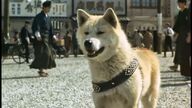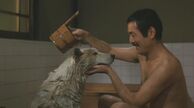-
Jeremie 2022-04-19 09:02:55
The Story of Hachiko - Japanese Emotional Expression
Many years ago, I saw the "American version" of "The Story of Hachiko," played by Richard Gere as a professor. The two versions each have their own distinct characteristics. The American style is strong and moving, the Japanese style is implicitly sad, and the prototype and framework of the...
-
Chesley 2022-04-20 09:02:34
Companionship, loved ones, happiness and oblivion
The story of the loyal dog
Hachiko is only about dogs. It is obviously about companionship, loved ones, happiness and forgetting. In terms of empathy, people are really inferior to dogs. Previously, the professor helped hachi catch lice, take a bath together, hugged the house to make a stove and...

Saburô Ishikura
Performing Experience
-
Lucinda 2022-03-16 09:01:08
It's better than the US version, there is no hard sensationalism, I thought it would burst into tears, but in fact the emotions are very restrained. In addition to telling the tragedy of Hachiko, the cross-section of life is quietly presented. Hachiko shuttled through the world, with warm and cold human feelings, and sadness in the four seasons. He relied on the good memories of the professor and survived his life of constant abandonment and damage, and finally became a monument in the wind and snow. Hachiko carries people's memories of the professor, and also carries the scarce qualities of loyalty, kindness and compassion. The film is warm on the surface, but in fact the screenwriter praised a group of people and satirized a group of people, and his position was clear. When the PS subtitles appeared, I realized that the screenwriter turned out to be Shindo Kanto God.
-
Juliana 2022-03-20 09:02:55
The American version mainly shows the loyalty of dogs, while the original Japanese version mainly shows the kindness of people. The former is provocative in joy, and the latter is moved in warmth.













